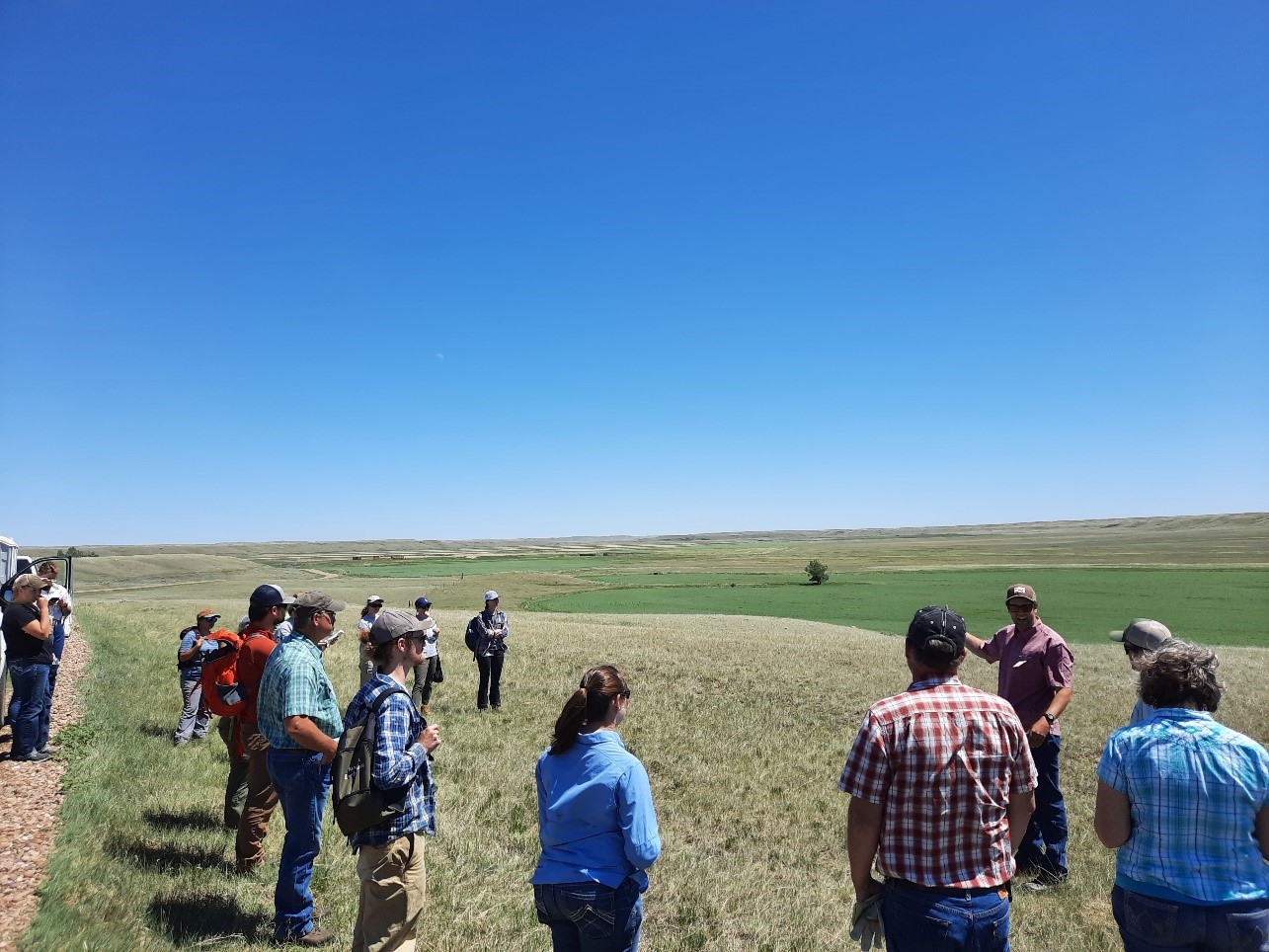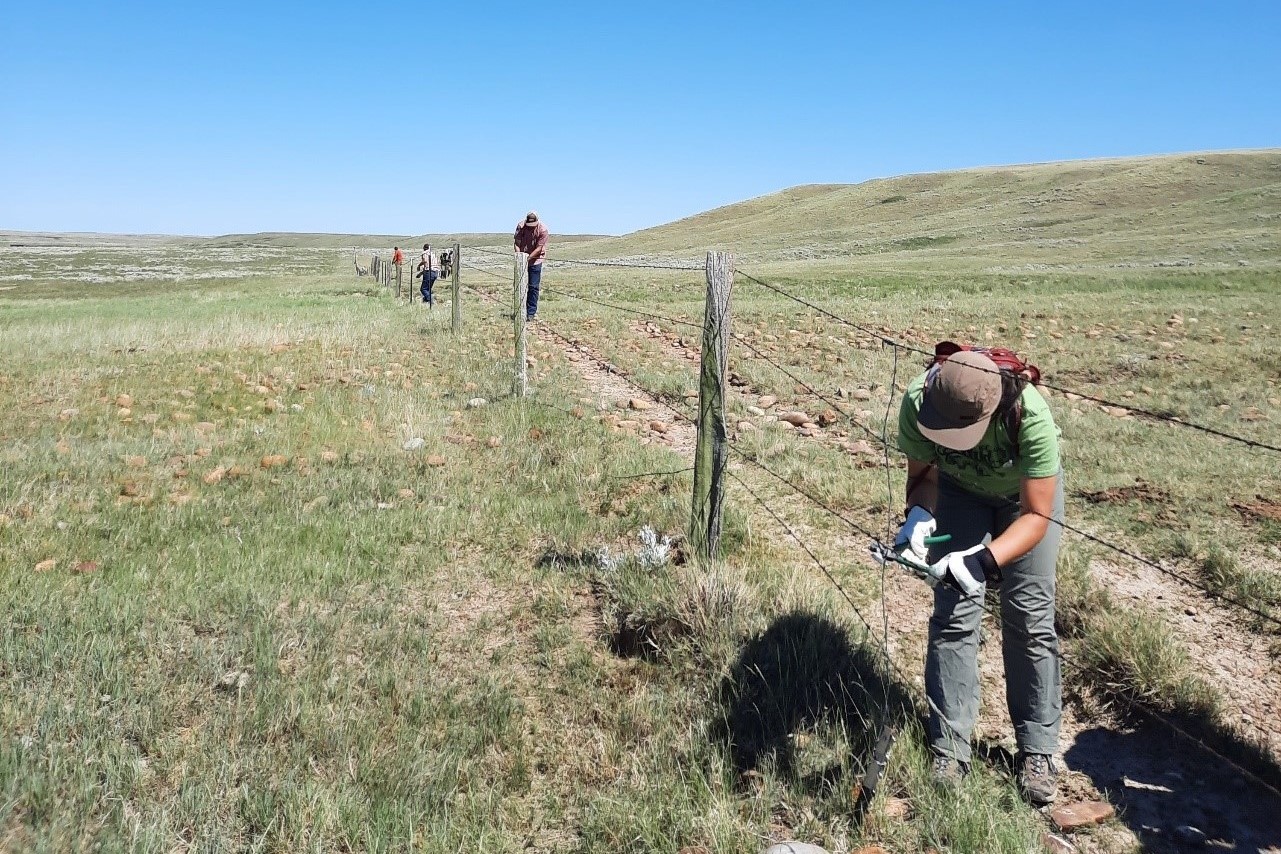This summer, an effort between conservation organizations and Blaine County ranchers at the Louie Petrie Ranch north of Turner, Montana offered two days of hands-on learning, practical ranch work, and collaboration to benefit ranching and pronghorn migration in the region.
The Obrecht family hosted more than 40 volunteers June 17 and 18 at their ranch to share how fencing and simple changes of wire heights can make huge impacts for migrating pronghorn. The Woody Island Coulee area is a key migration linkage for pronghorn. Hundreds of animals migrate through the area each year as they follow the narrow strip of grassland from summer to winter ranges at each end.
Along the way, these animals can encounter fences that make travel difficult. This added stress can have negative impacts to their health and survivability, especially in harsh weather. Raising bottom wires on fences to 16-18 inches can greatly reduce these hindrances. This field day accomplished just that task for the benefit of migrating pronghorn as well as completed some needed fencing maintenance on the ranch.
The workshop started with presentations related to pronghorn migration and programs from Montana Fish Wildlife and Parks and Pheasants Forever biologists. Tyrel Obrecht shared an overview of the ranch and gave a great explanation as to why they prioritize wildlife habit alongside their cattle grazing. The family has found that by managing their grazing in a way that benefits wildlife, their business benefits, too.
The group toured the ranch to see cropland that has been seeded to grassland and their use of temporary fence to help with plant recovery and carbon sequestration. By grazing small areas for short periods of time, and therefore allowing greater rest and recovery time after grazing, Obrecht said he has noted increased plant vigor and resiliency without sacrificing grazing capacity. This increase in plant response also helps provide high value food sources for wildlife. These are food sources pronghorn need while migrating through the area.

Next, volunteers either removed a bottom wire, clipped the next wire up in places, or re-hung at a height easier for pronghorn to get under. Most of the volunteers were conservation agency or organization employees, but surrounding ranchers also came and learned about pronghorn migration and provided support to the fencing crews.
The event brought together a diverse network of experiences and expertise: college-aged interns worked alongside state and regional agency directors; ranchers worked alongside employees of wildlife non-profits. Some of the intern participants were from as far away as Massachusetts and had never seen pronghorn before. The event was a great introduction to ranching and wildlife co-existing in this prairie landscape.
The Obrecht family and workshop organizers set a goal to modify nine miles of fence for the event. By lunch on the second day, the group had modified more than 11 miles of fence. It was a great opportunity for relationship building, community engagement, wildlife habitat improvements, and ranching exposure for people that might not otherwise see the intersection of ranching and conservation on the ground.
This project is part of NRCS’s Montana Focused Conservation effort titled “Hydration for Migration” that leverages partnership support through Ranchers Stewardship Alliance, USFWS-Partners Program, Montana Fish, Wildlife & Parks, Ducks Unlimited, Pheasants Forever, World Wildlife Fund, National Wildlife Federation, Blaine County Conservation District, and other partners. With successful completion of this larger initiative, partners plan to impact 100,000 acres with grazing management improvements and modify over 50 miles of fence to facilitate pronghorn movement. The project will have secondary impacts of improving plant productivity and health and improving terrestrial habitat for wildlife and invertebrates.
Thank you to the Obrecht family and the Louie Petrie Ranch for hosting this great event.

